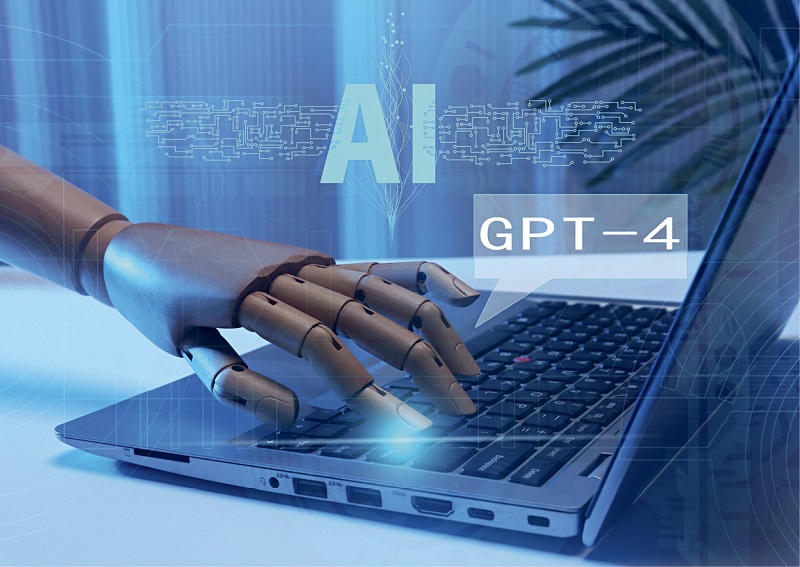The development of artificial intelligence will lead to structural reform in almost every industry in the future.

GPT-4 is a new language model created by OpenAI that can generate text that is similar to human speech. It advances the technology used by ChatGPT, promising more possibilities for AI creativity.
A friend of mine complained to me the other day that the game company she worked for was downsizing, and the layoff reason seemed somehow ominous: after using AI to refine some design schemes, the company found that their efficiency improved by 50 percent, which means that it no longer needs as many workers as before. She gave a wry smile and said that loss of jobs to AI is now a reality.
In March 2023, Tesla CEO Elon Musk said at an event that in the future, the ratio of humanoid robots to humans would exceed 1:1. In other words, we will live in a society that is abundant with intelligent robots. Based on this impending trend, it is not difficult to foresee that many industries will undergo structural changes due to the development of AI.
The direct concern that comes with the advancement of AI is: will humanity suffer massive unemployment as a result? And who will lose their jobs?
OpenAI, the founding team of ChatGPT, recently published a paper entitled “GPTs are GPTs: An Early Look at the Labor Market Impact Potential of Large Language Models,” which forecasts that at least 10 percent of work done by approximately 80 percent of Americans will be affected by AI.
Among them, the more easily affected professions are mathematicians, financial data analysts, tax collectors, writers, web designers, translators, journalists, and legal secretaries. Those who are basically unaffected are mainly manual workers, including chefs, dishwashers, and repairmen. In addition, high-income and highly educated individuals are relatively more vulnerable.
As for jobs that require expertise and experience in dealing with complex problems, such as engineering design or medical diagnosis, this paper argues that such tasks require creative thinking and decision-making skills, which AI machines presently don’t have. However, with the advancement of AI technology, it is only a matter of time before these categories of jobs are replaced as well.
The paper has shocked many, but experts with different voices say that those who constantly predict large-scale unemployment only see the existing old jobs humankind might lose, but turn a blind eye to the new jobs to be created by technological revolutions.
John Pugliano, author of Robots Are Coming: A Human’s Survival Guide to Profiting in the Age of Automation, said in a recent interview that in developed countries, any work that is repetitive and predictable may be replaced by AI over the next five to 10 years. For example, the design of simple buildings can now be completed by AI, and in the future, only architects with creative and artistic skills would most likely be successful.
But he also mentioned that AI will create new positions, such as developers of AI systems or software, computer algorithms, and engineers familiar with system maintenance. At the same time, the demand for skilled workers, such as plumbers, electricians, and construction workers will continue to increase.
Optimistically, AI will support humanity to a greater extent in the future, thus liberating humans from a large amount of routine work and enabling them to shift to tasks that require judgment and creative thinking. New business opportunities and innovative cultures will emerge as a result.
But this undoubtedly poses new challenges to the current educational system. How can our educational system reassess the advantages of humans in the age of AI? How do we enhance our lifelong learning ability and effectively develop creative thinking through learning?
Throughout history, humankind has worried about technological revolutions. In the early days of the Industrial Revolution, the Luddite movement precisely took place when workers were afraid of being deprived of their livelihoods by machines, so they spontaneously destroyed the hosiery machines.
In 1965, Nobel laureate in economics Herbert Simon declared that, “Machines will complete any work that humans can do within 20 years.” In the 1980s, the emergence of personal computers also sparked a “computer phobia” — people worried that their work would eventually be replaced by computers. But from past experience, every technological era ultimately creates more job opportunities than it eliminates.
However, will the situation be different this time when faced with the fierce threat of AI? Whether it be AI painting or ChatGPT, which quickly generates articles, documents, and theses, it reminds us that the current intensity of AI’s replication of human functions is unprecedented and cannot be underestimated.
Related news of great importance, is that on May 11 the European Parliament overwhelmingly passed a draft of the Artificial Intelligence Act after months of negotiations, which introduces new rules on facial recognition, biometric monitoring, and other AI applications, and proposes new ideas for strict regulation of AI tools such as ChatGPT. This is a crucial first step toward strict regulation of the application of AI technology through legislation.
Standing at the crossroads of the technological revolution, it is difficult to accurately predict the future. But people are well aware that AI will change human life in a profound way. The remaining question is: how do we redefine human beings in the face of AI, and how can we benefit from it?
MA DI is a freelancer based in Beijing.